While the recent pandemic has changed virtually every aspect of daily life, escaping into Canada’s great outdoors has helped many of us cope with the related safety issues and inconveniences. Summer often inspires us to explore the world. But, this year, we stayed close to home.
It’s easy to include numbers of blooms, and with a reasonable amount of background definition, when we compose the scene using a wide angle lens.
Thankfully, the transition from summer to fall comes with many local photographic opportunities. Forests and woodlands are changing colours. Meanwhile, farm fields, orchards and other agricultural lands radiate the colours and patterns of the harvest season. Here in Eastern Ontario, sunflower blooms peak at the end of August. I took advantage of this annual phenomenon by visiting local gardens and commercial farms that allowed public access.
Long focal length telephoto lenses have limited depth-of-field. Use this to your advantage by focusing on a primary subject while expecting everything else to remain out-of-focus.
When approaching scenery filled with multiple blooms and intricate details, you can use a variety of lenses to achieve different results.
Wide angles will help you capture a large number of blooms in a single frame. With proper positioning and focus, you can create the appearance of an infinite field of flowers.
AmericanGoldfinch001.jpg – 500mm telephoto lenses make it much to fill the frame with small animals. Have one handy if you’re lucky enough to see something like this American Goldfinch land on a bloom.
I sometimes use telephoto lenses to compress the view while putting foregrounds and backgrounds out of focus. This makes it easier to fill the frame from edge-to-edge with colourful flowers. Set your aperture for a shallow depth-of-field while setting your focus on an object that’s isolated or stands out against the rest of the scene. With everything else out-of-focus and blurry, focus on a prominent subject like a person, or a single bloom with a contrasting shape or colour.
SunflowerBlackSwallowtail001.jpg – Even butterflies like this Black Swallowtail tend to keep their distance from us. Focal lengths around 500mm can help fill the frame with small animals in a garden.
Fields of flowers attract various forms of wildlife like tiny pollinators and small birds. Macro lenses are great for butterflies, bees and other insects. Telephoto works best for birds, small mammals or any uncooperative creatures that won’t let you get close.
Coming in a large assortment of colours, sizes and shapes, gardens sometimes grow many different species of sunflower like this Little Tiger Sunflower.
Although you’ll likely have to wait until next year for the flowering plants at your local sunflower patch, the season still has lots of opportunities coming up including pumpkin patches, vineyards, fall colours and migrating waterfowl. Don’t hesitate to escape. Just get out there, but please take necessary precautions and stay safe.
You don’t always have to include colourful blooms when taking photos in a sunflower patch. Look for interesting close-ups and compositions while exploring any garden. Macro lenses can help you discover many unseen worlds in a landscape of endless colour.
Small insects and other pollinators love flowering plants. Some tiny animals will allow you to get close with a Macro lens. However, don’t expect to achieve much depth-of-field when photographing tiny subjects like this Tarnished Plant Bug. Just make sure to focus on the eyes.
It’s easy to produce a good depth of field with a super wide angle lens. Using a 24mm lens with the aperture set to f11, and focusing one third of the way into the field, I was able to get the entire field in focus.
About Tony Beck
Tony Beck is an award winning, Nikon Ambassador, freelance photographer based in Ottawa. He teaches birdwatching and nature photography courses. Follow Tony’s adventures at www.AlwaysAnAdventure.ca



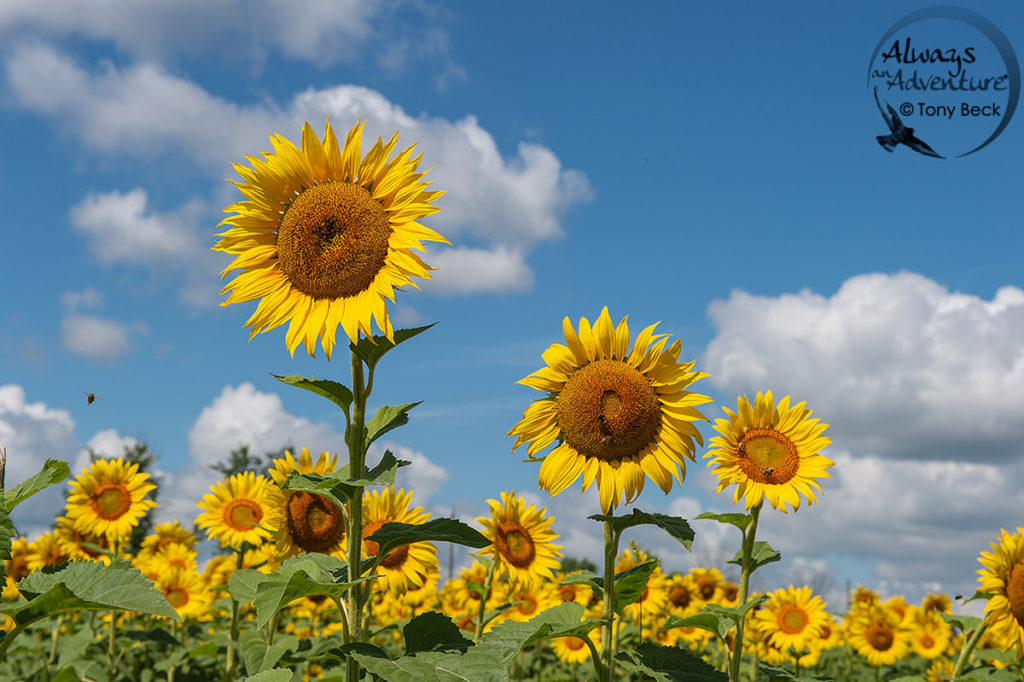
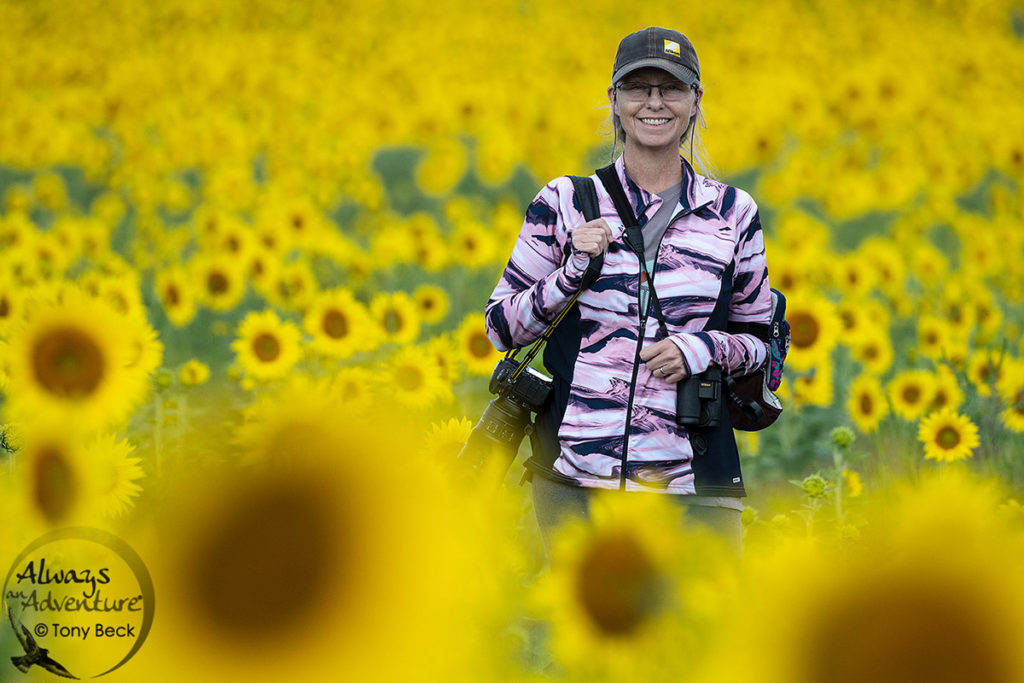
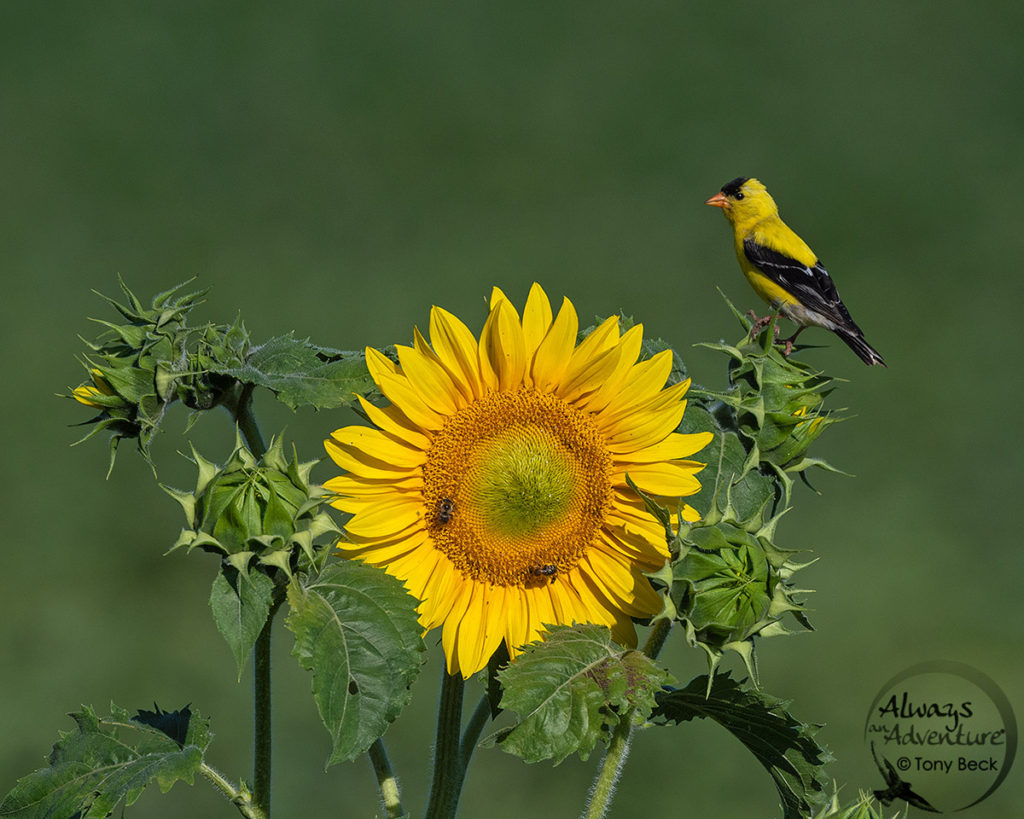
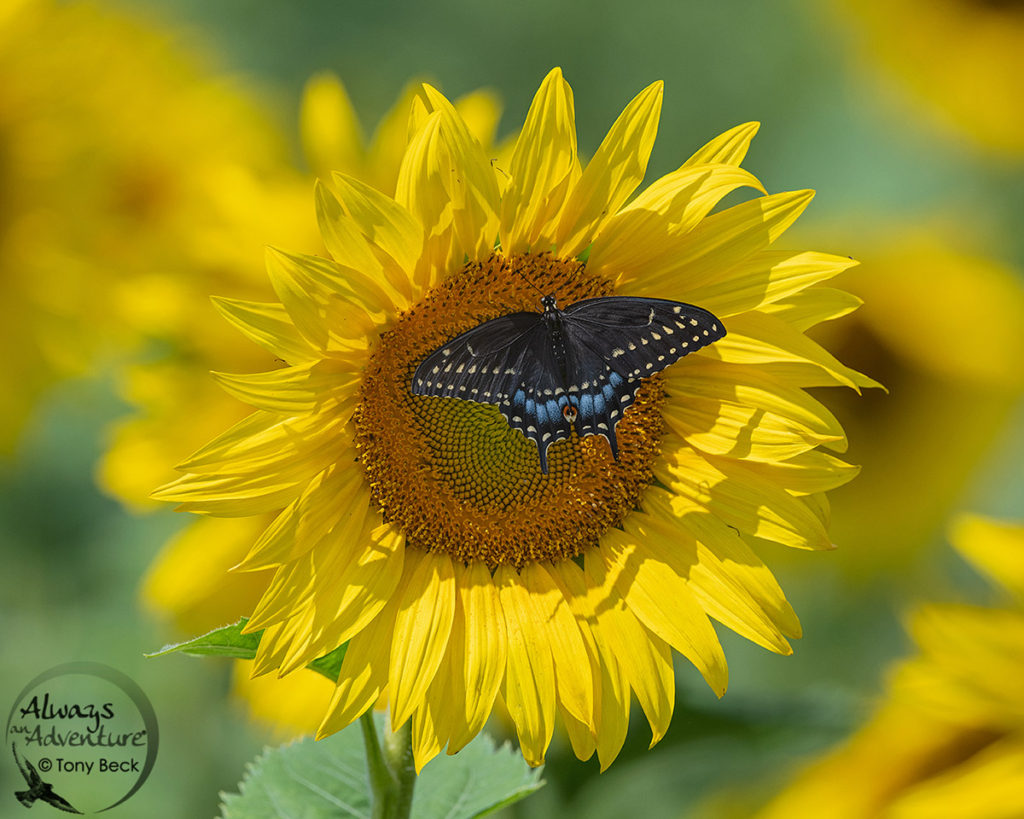
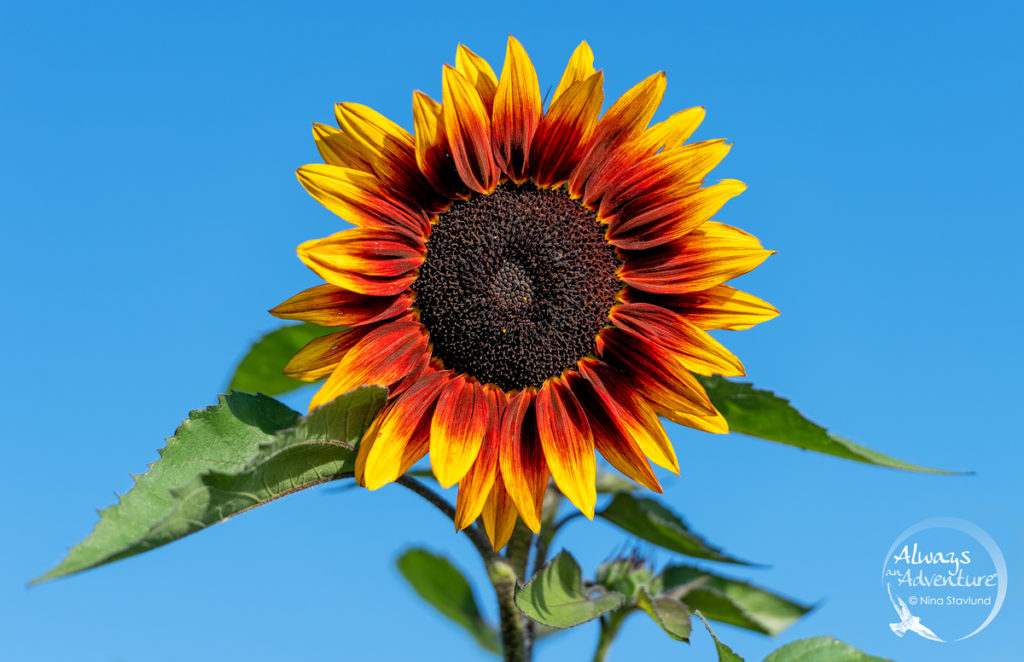









great series of photographs true art